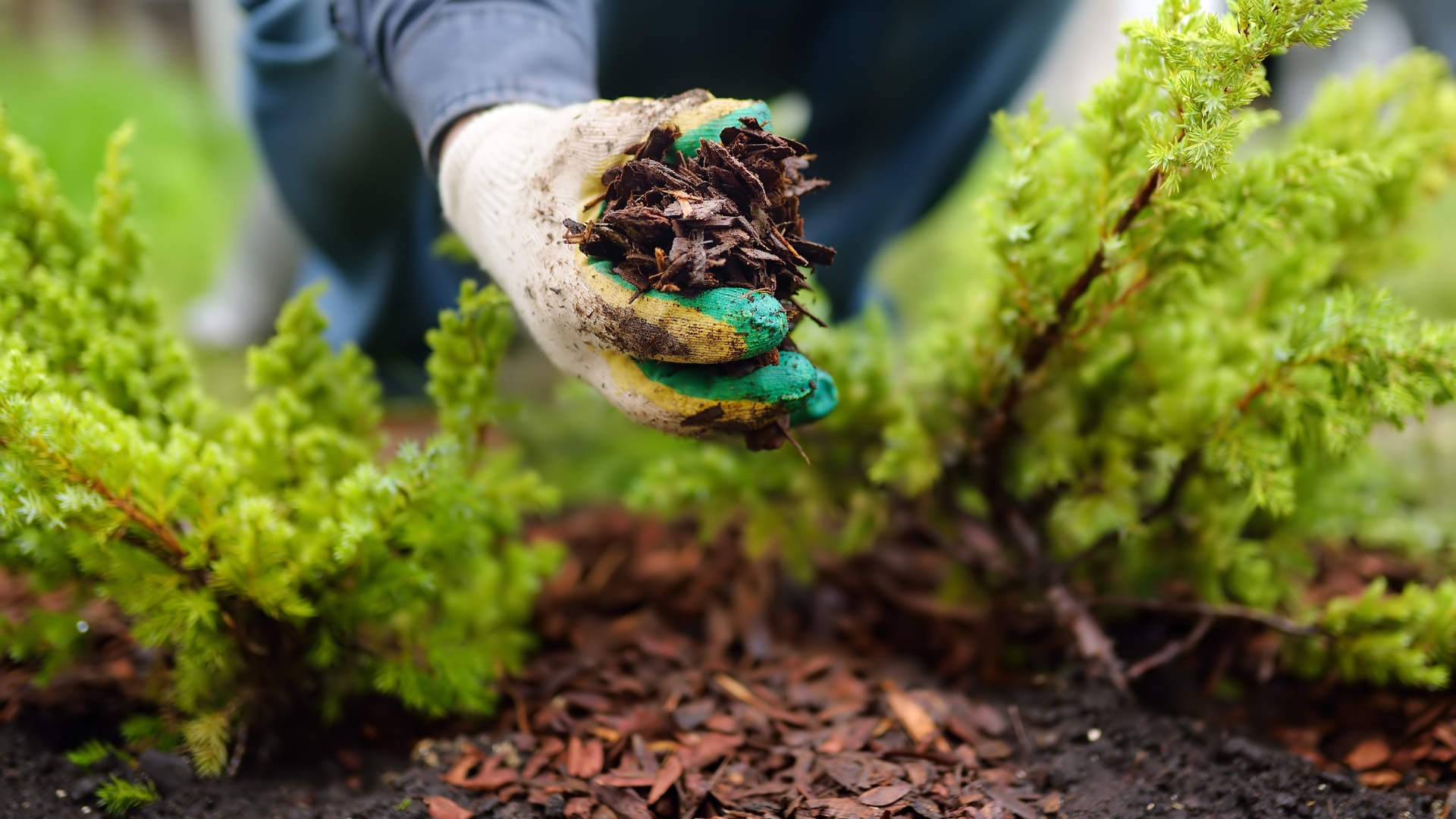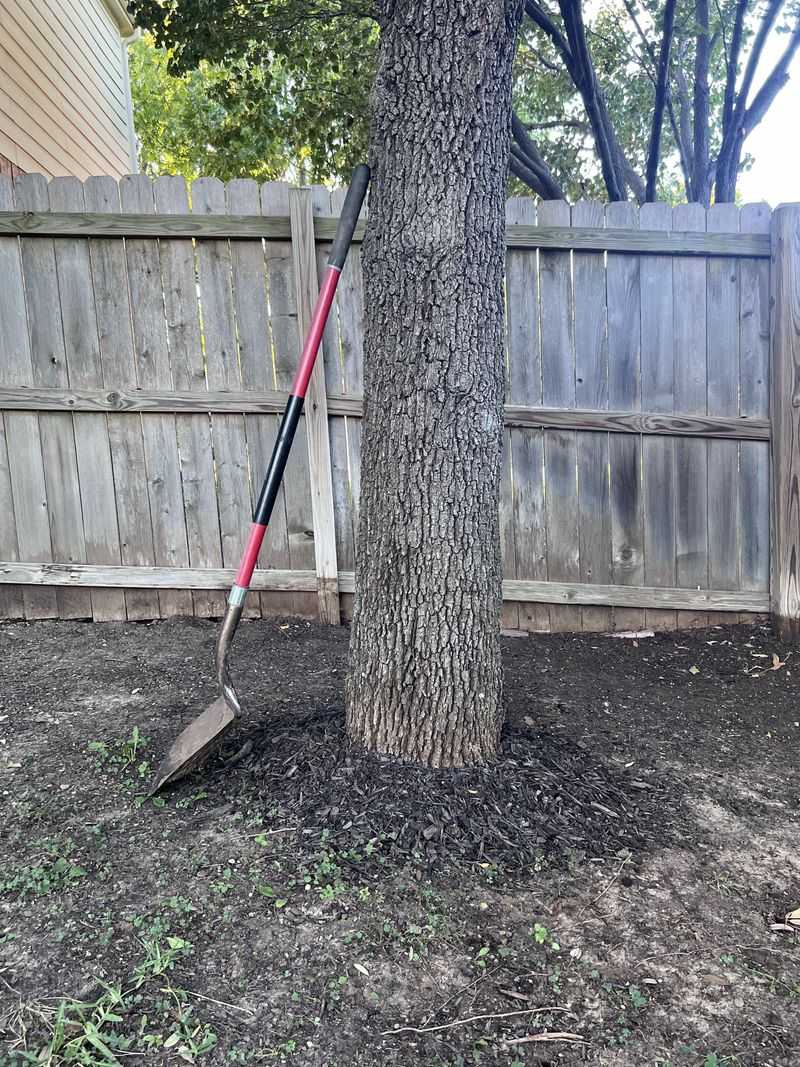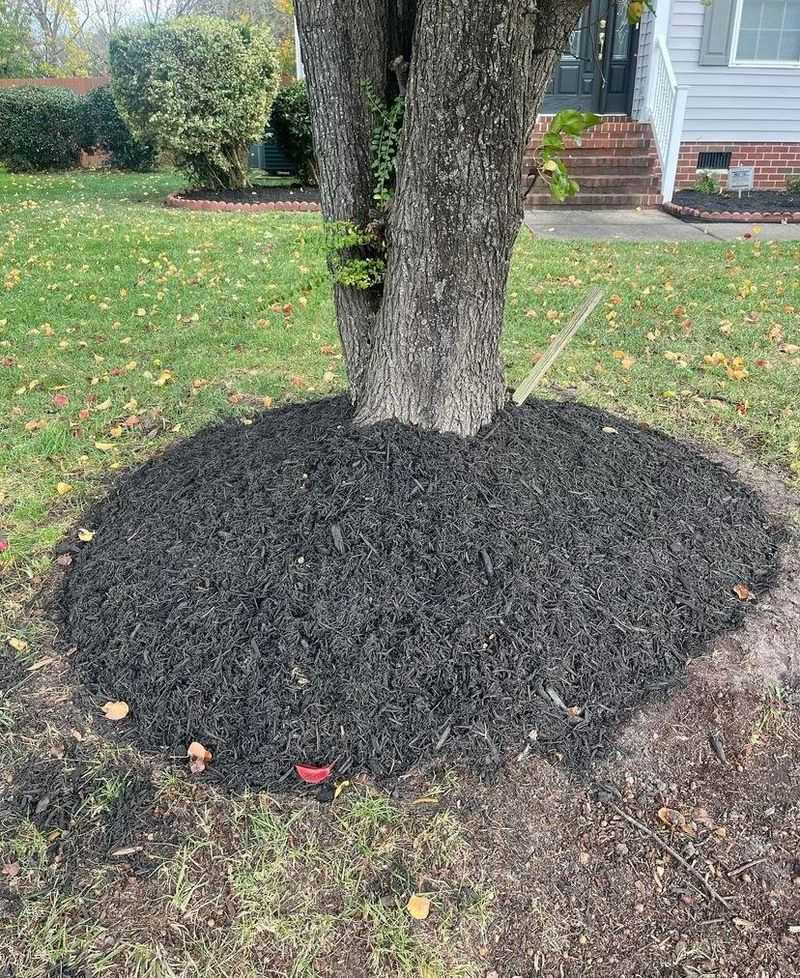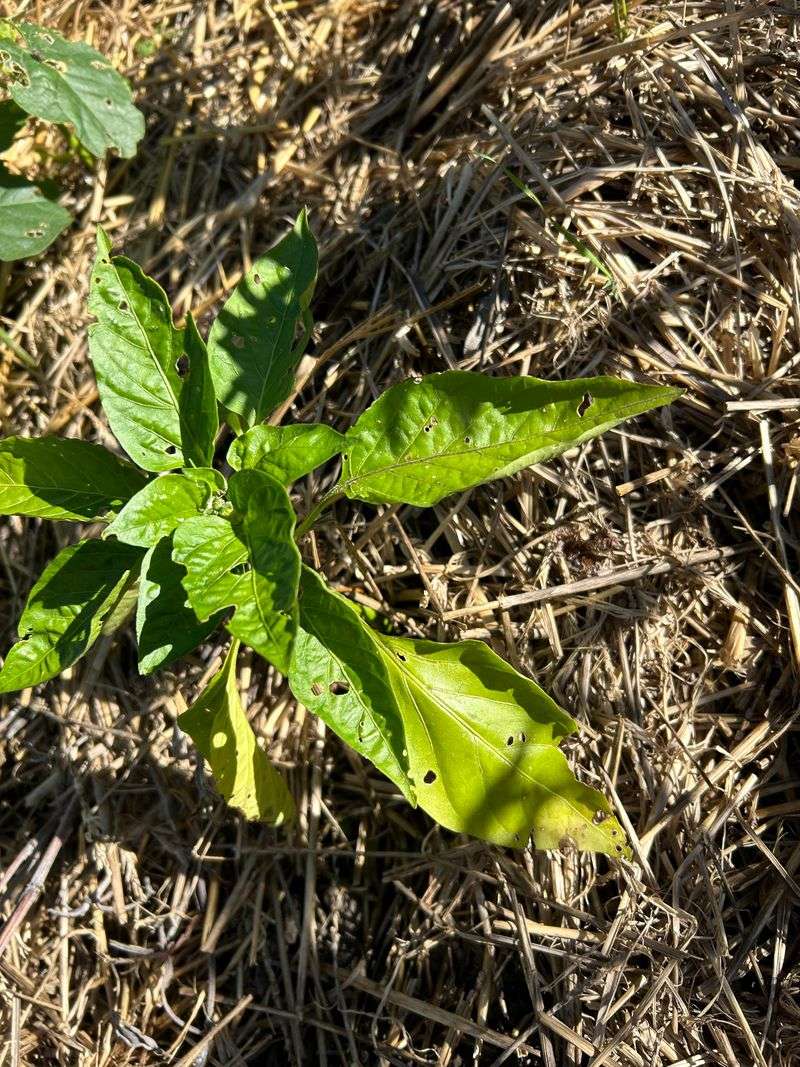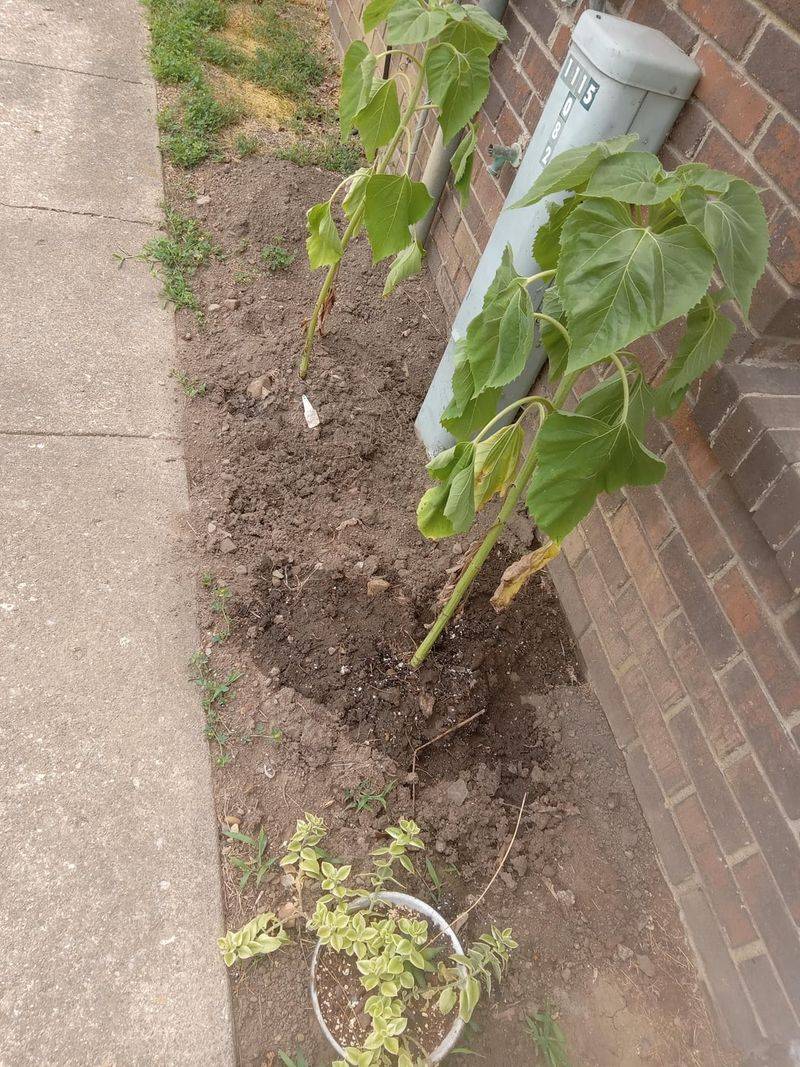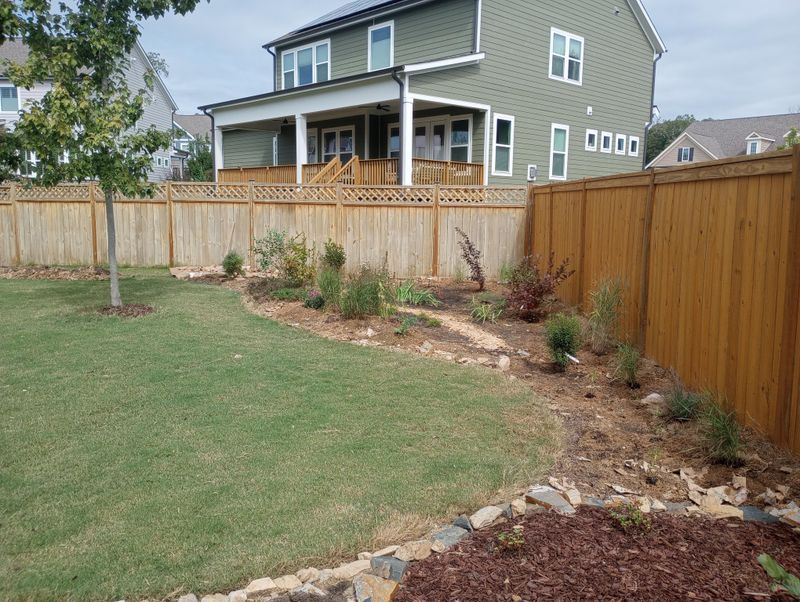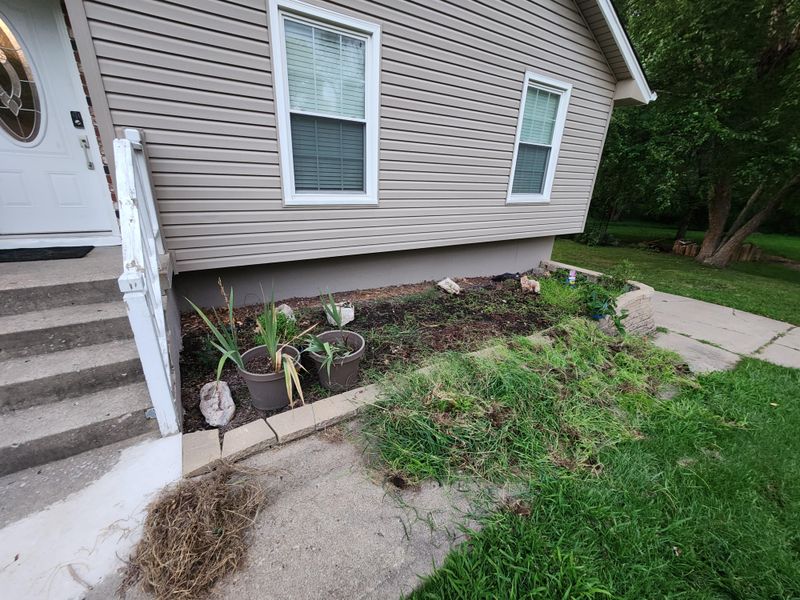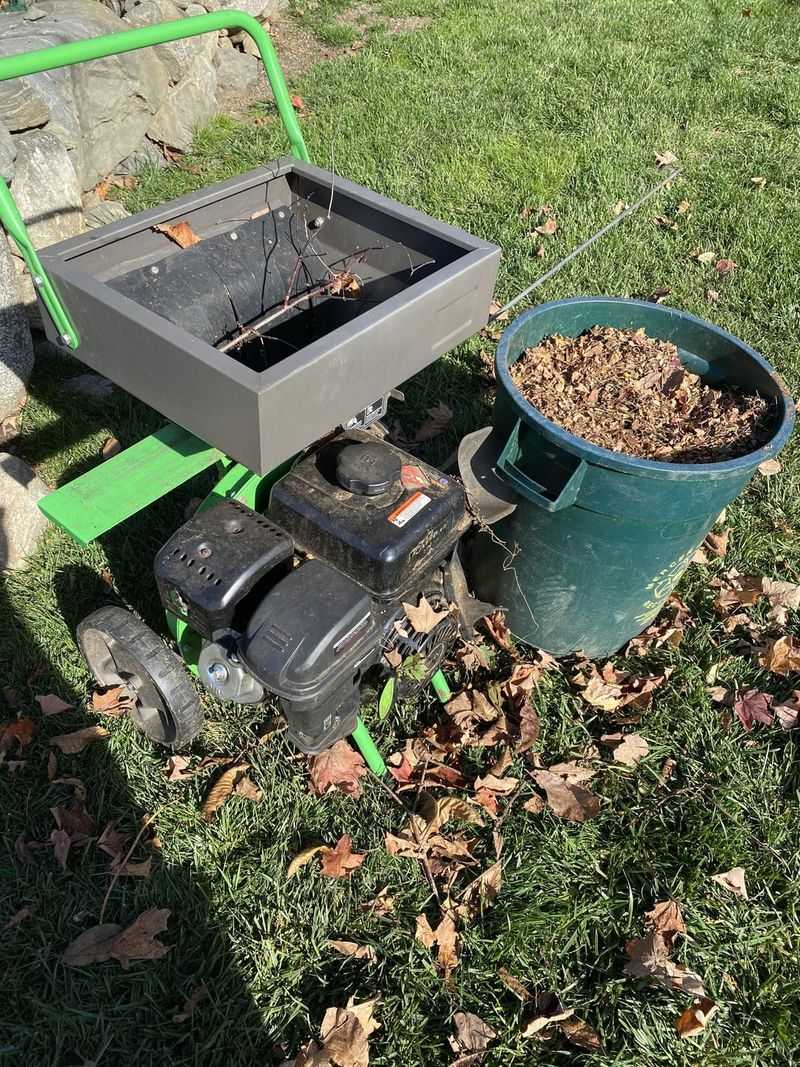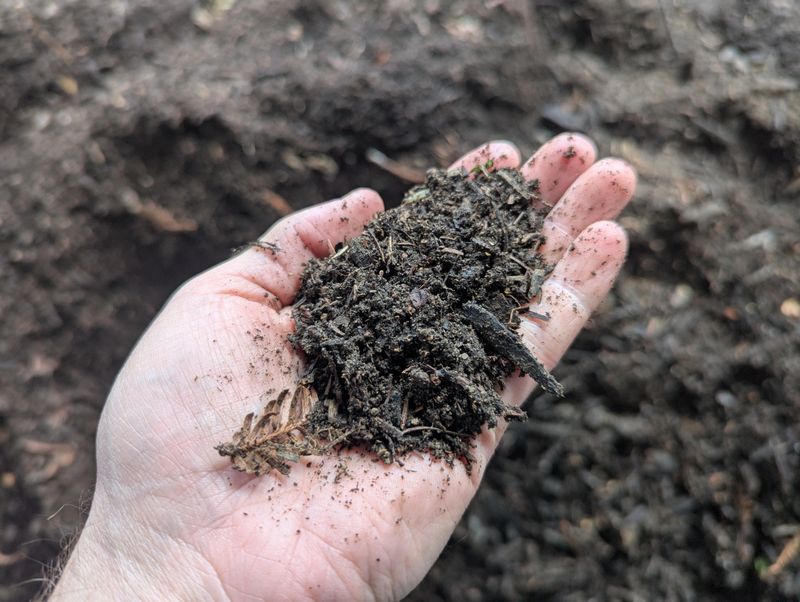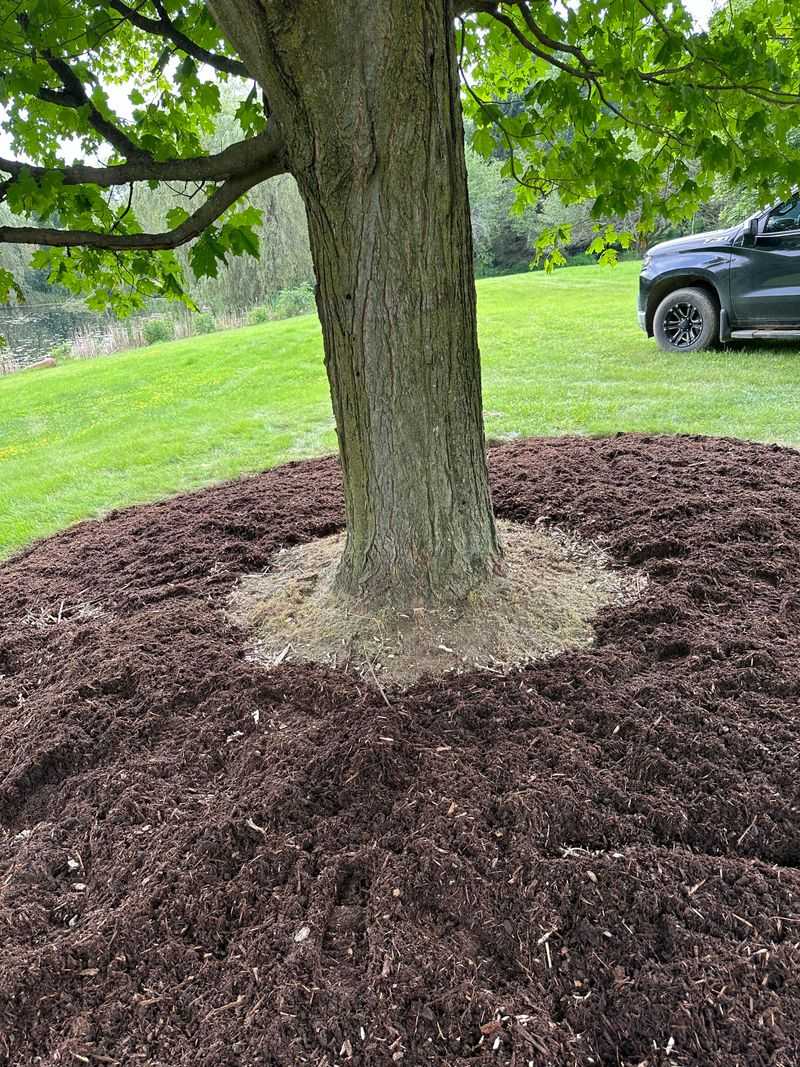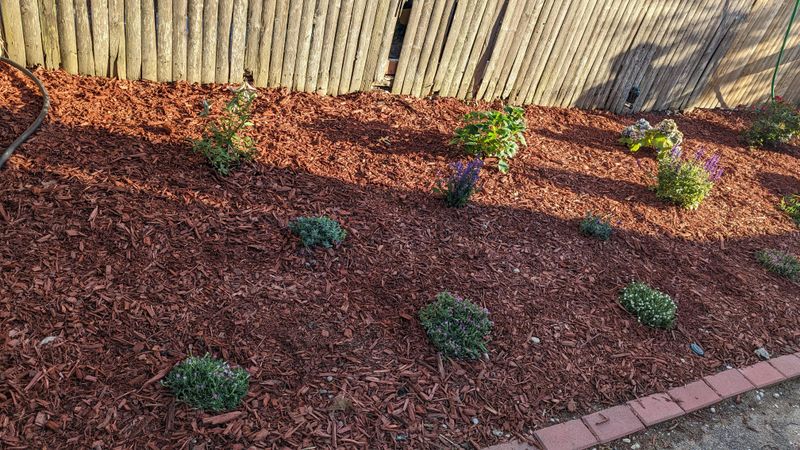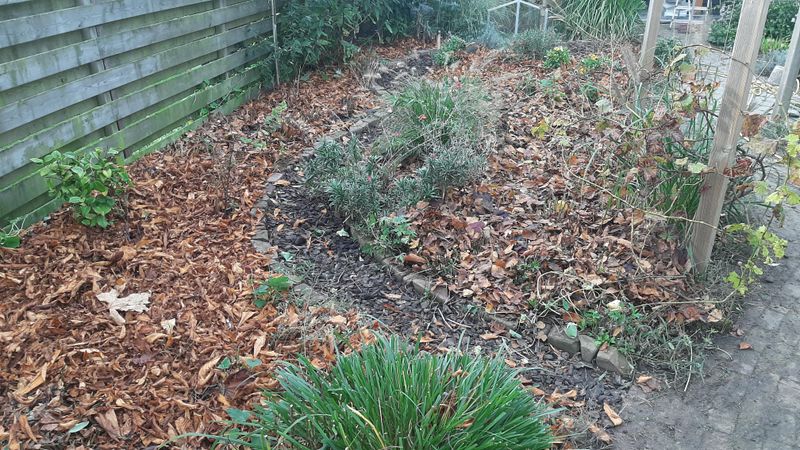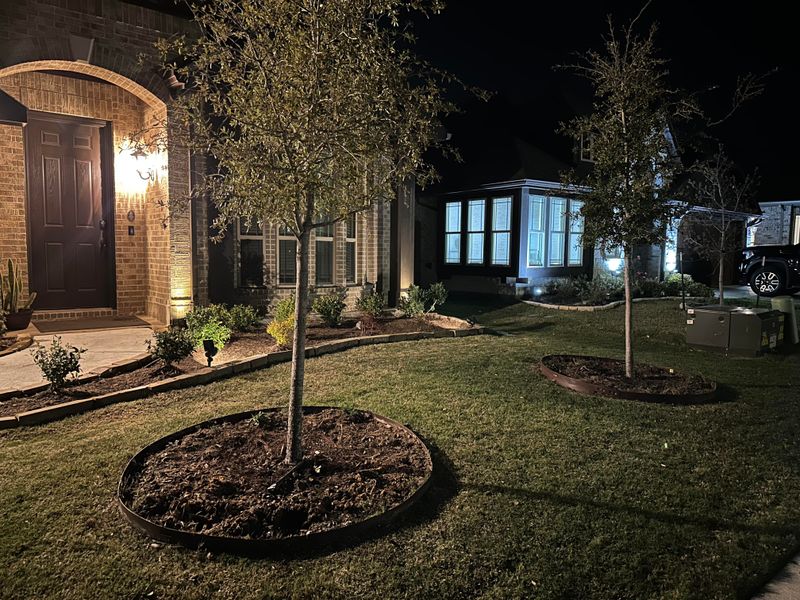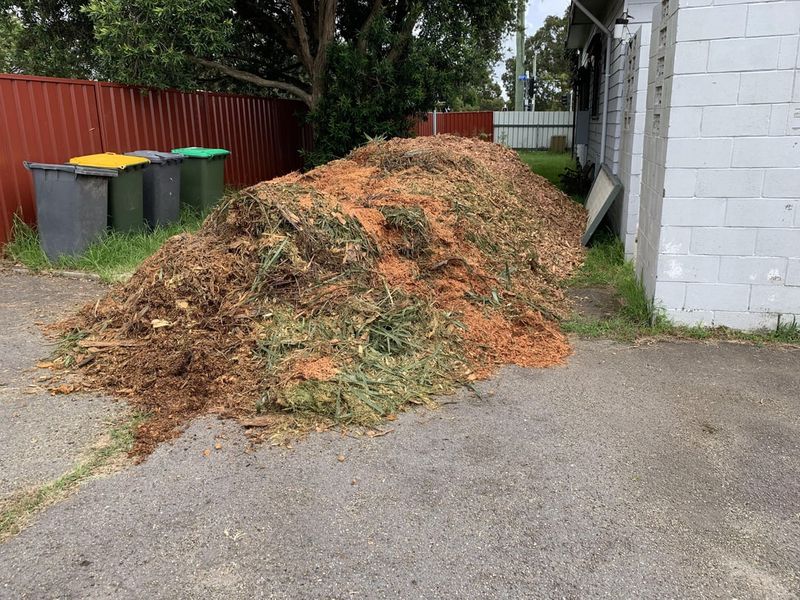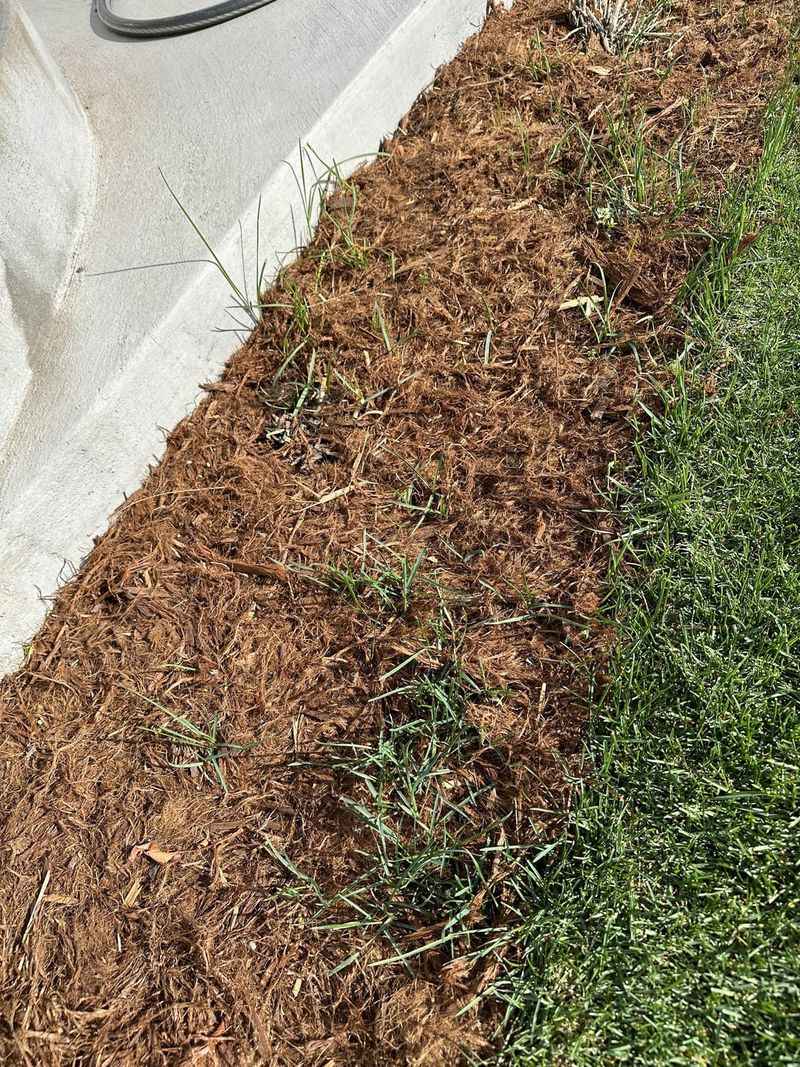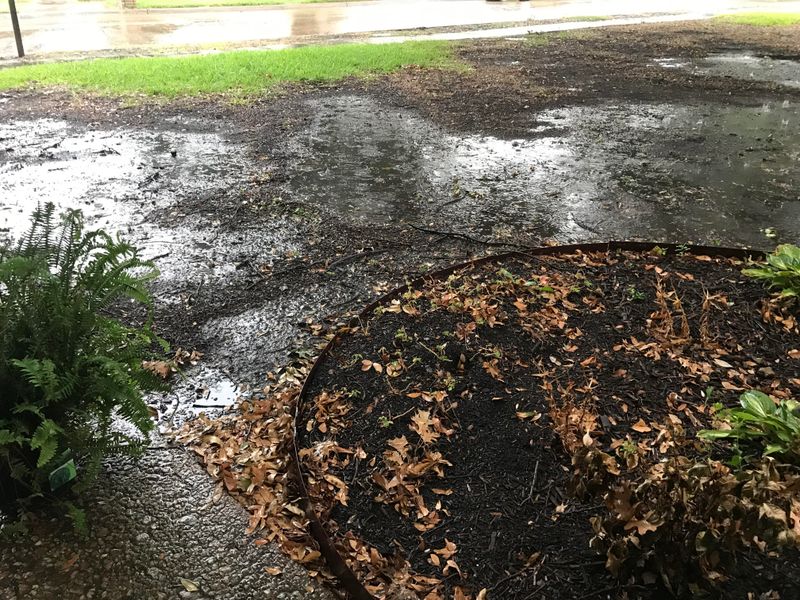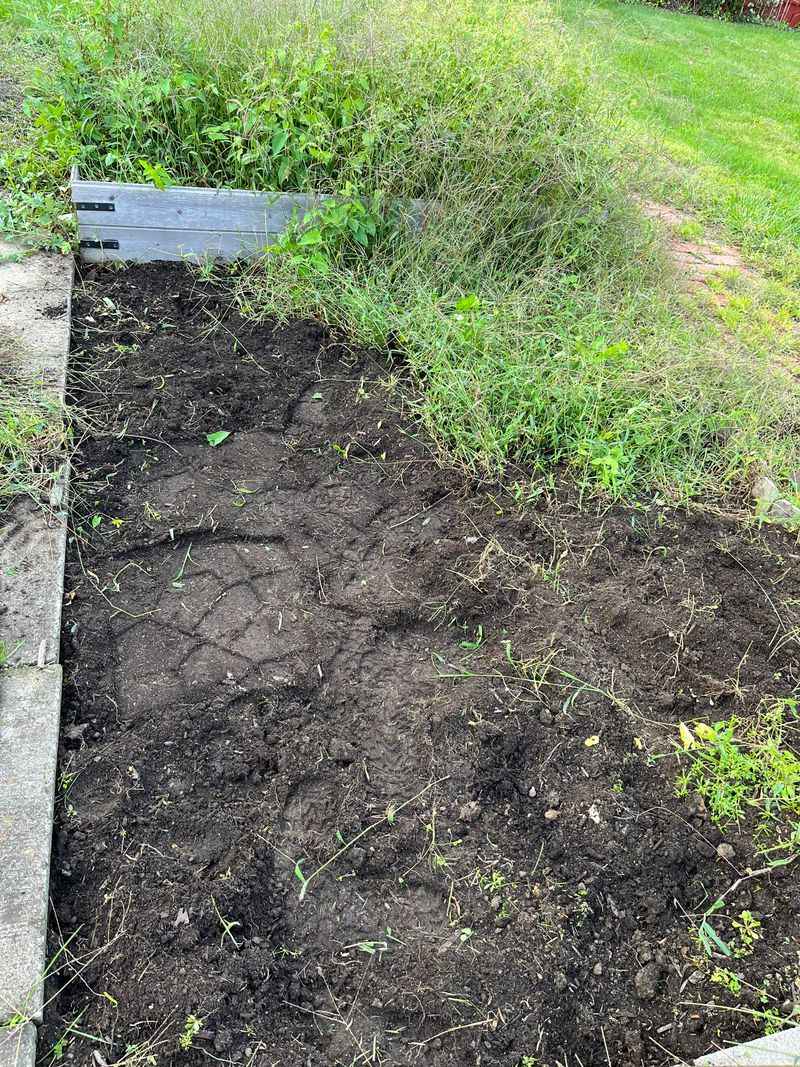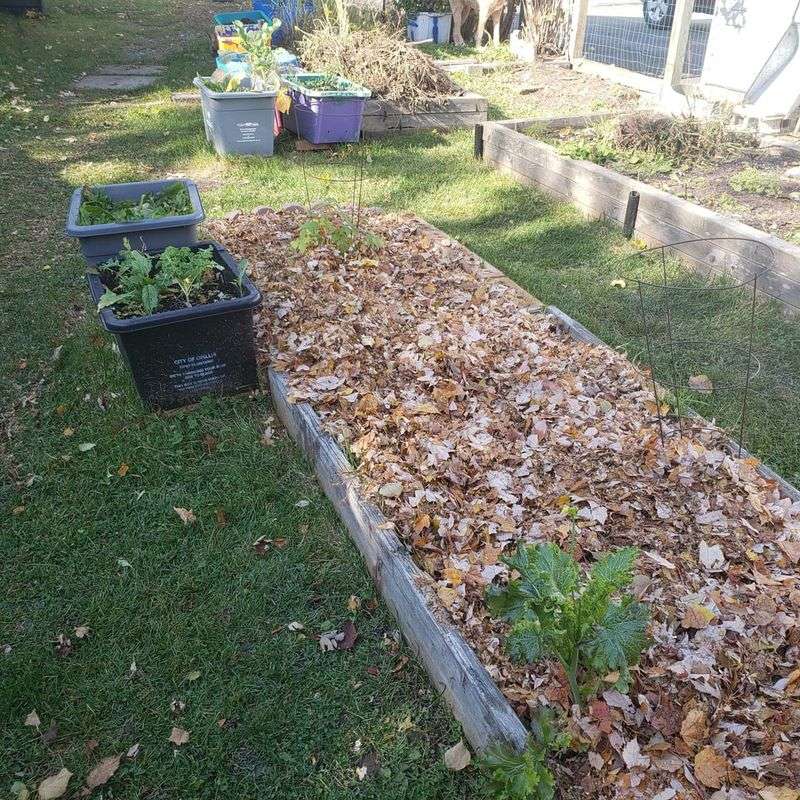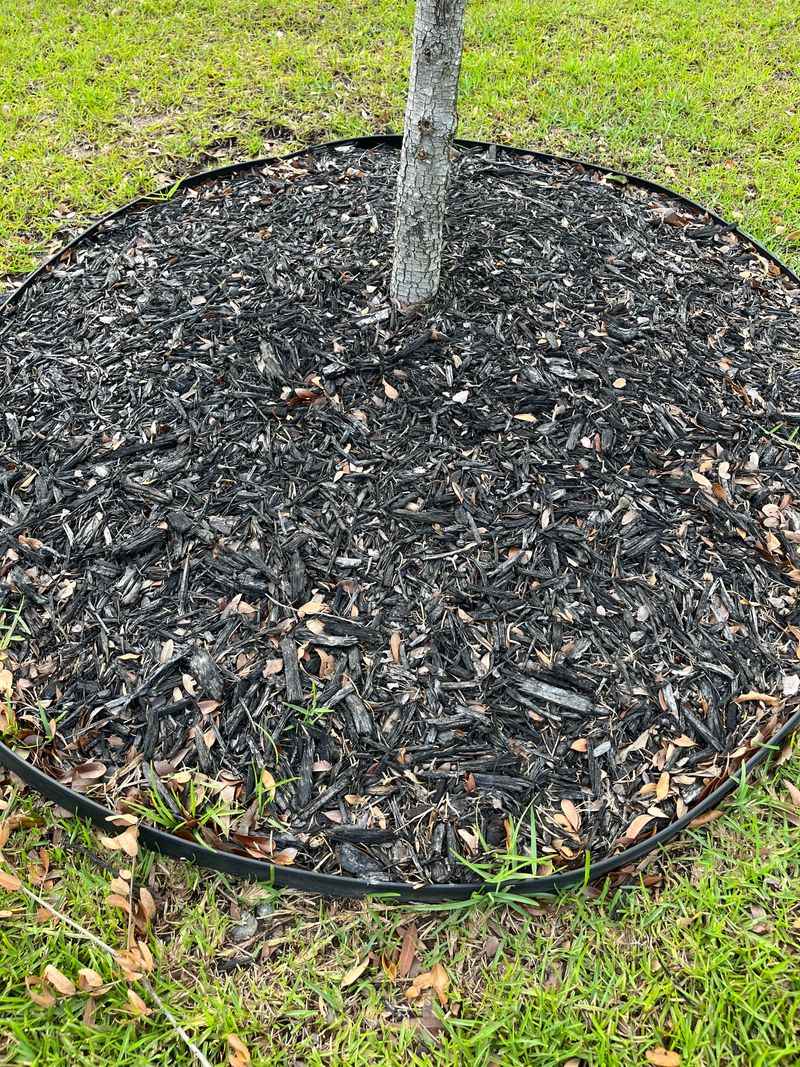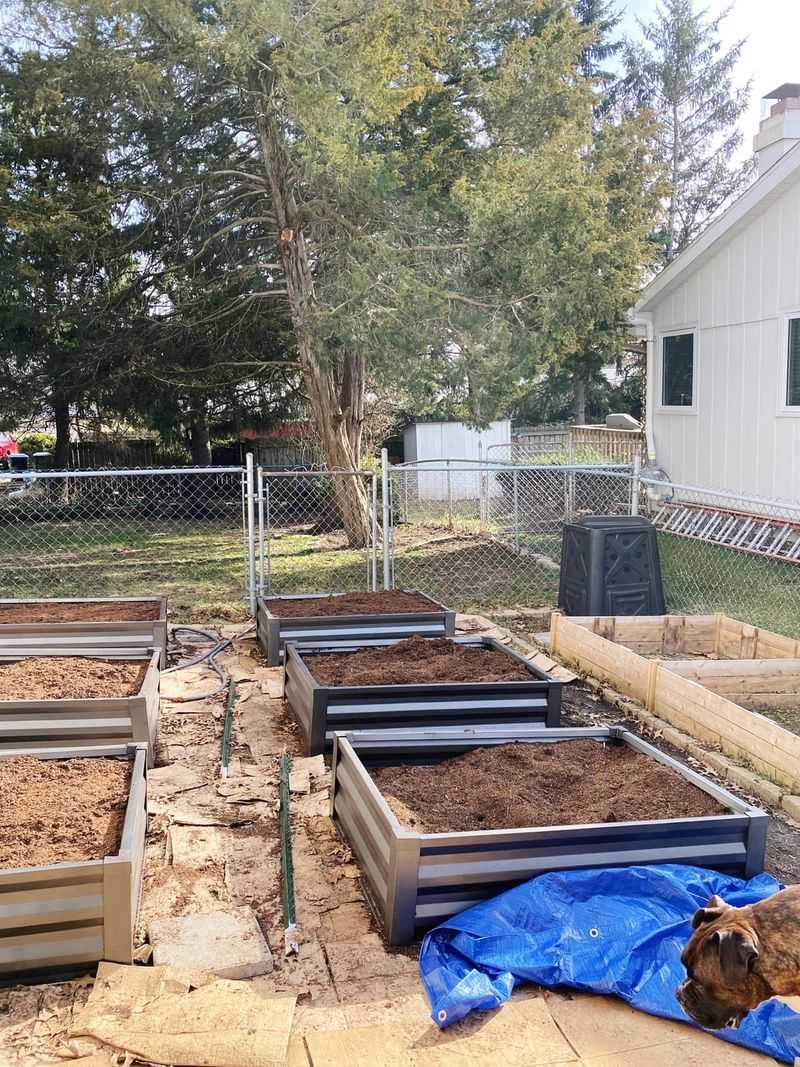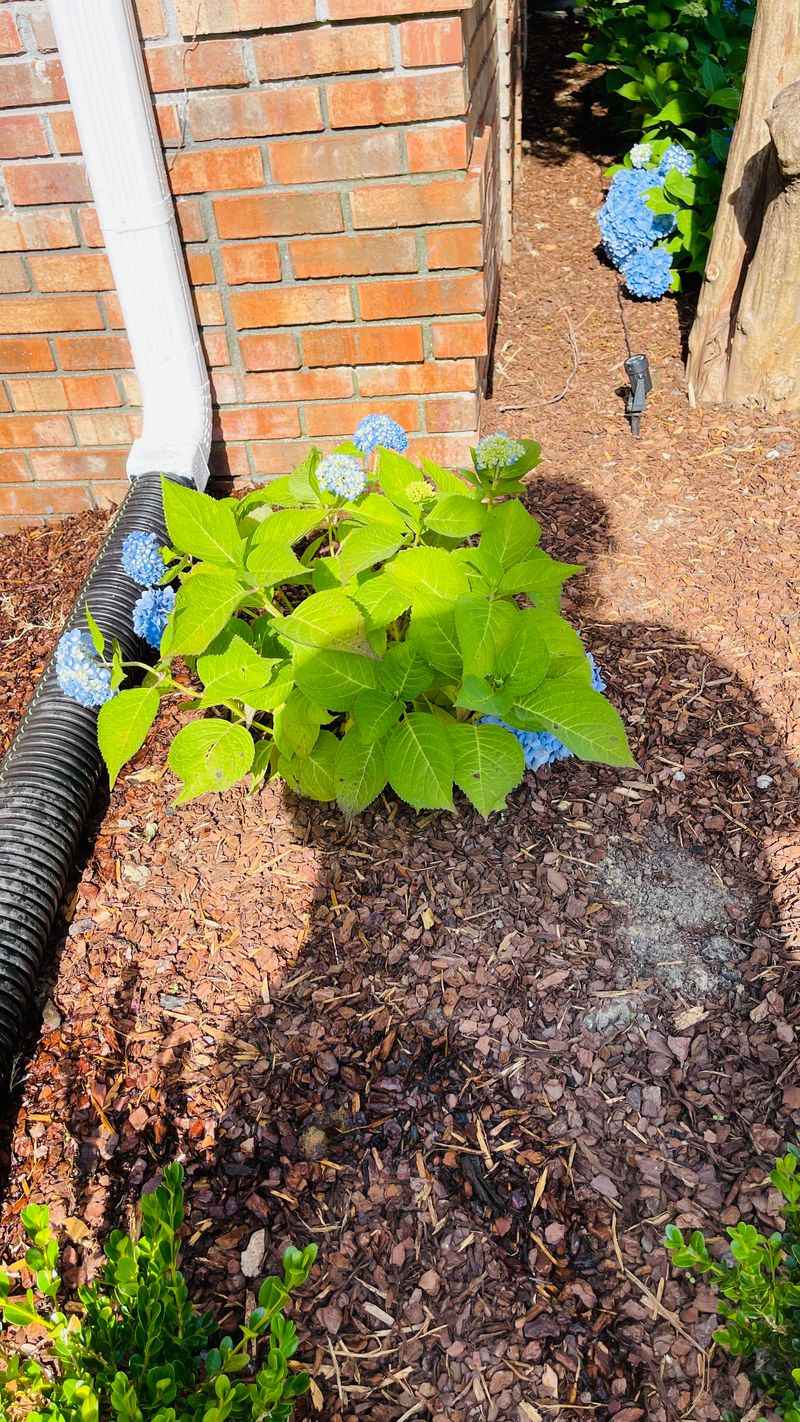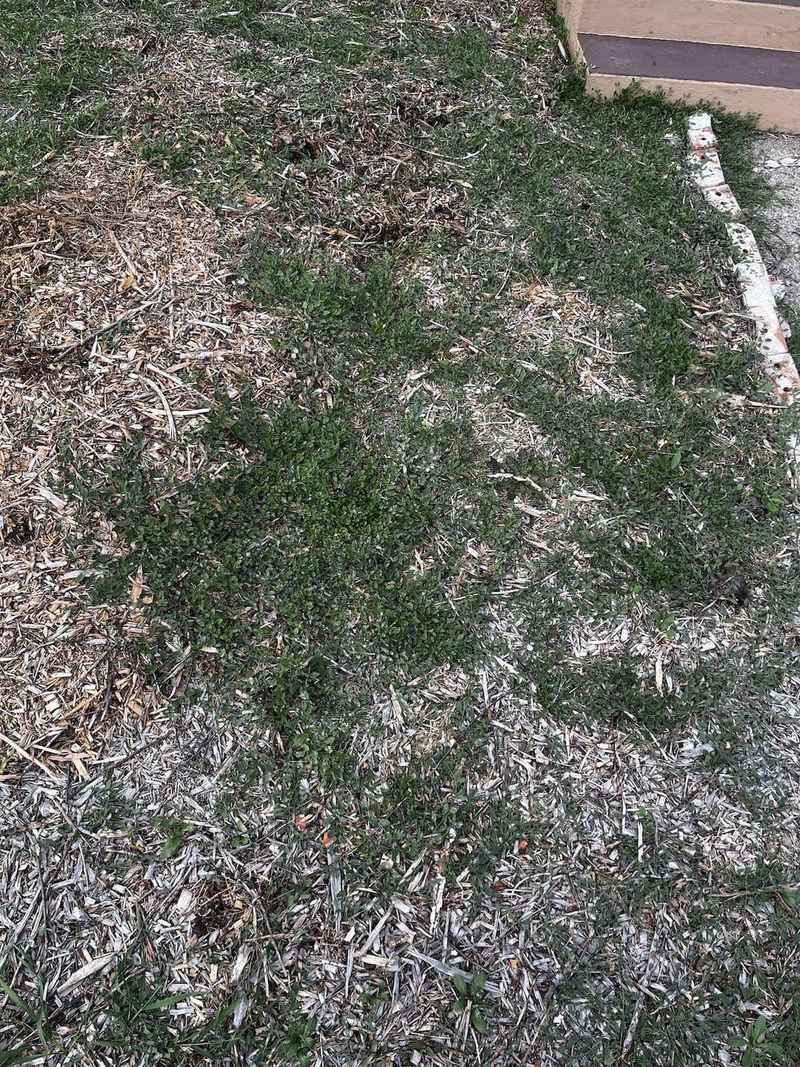Mulch is like a cozy blanket for plants, but the wrong approach can turn that comfort into chaos. Too much can suffocate roots, too little won’t do much good, and the wrong kind can invite pests to the party.
The good news? A few simple fixes can get things back on track without a gardening meltdown. Let’s sort out the most common mulching mishaps and keep those plants happy!
1. Too Much Mulch
We all love a thick, cozy mulch layer, but if you go overboard, it can end up causing more harm than good! A super thick layer can suffocate your plants by blocking air and water from reaching the roots.
Keep it around 2-3 inches, and you’ll be all good. The right amount will help retain moisture without drowning everything out.
2. Mulching Too Close to the Stems
Don’t let mulch hug your plants too tight—especially around the stems! When mulch touches the base, it traps moisture, and that’s a quick route to rot city.
Keep that mulch a couple of inches away from the stem to let your plants breathe. It’ll help them stay healthy and strong.
3. Using the Wrong Type of Mulch
Not all mulch is created equal. Fresh wood chips can rob the soil of nutrients, and that’s no good for the plants that need it.
Go for compost, straw, or shredded leaves instead; these will help your soil stay rich and happy. It’s a simple switch that makes a world of difference.
4. Mulching Too Early
Don’t rush it! Mulching before the soil warms up can trap cold temperatures and stunt your plants’ growth.
It’s best to wait until things have warmed up a bit before adding mulch, so everything gets the best start possible. Trust me, your garden will appreciate the patience.
5. Not Watering After Mulching
Mulch helps retain moisture, but it can’t do all the work on its own. If you forget to water after mulching, you’re leaving your garden high and dry.
A good watering right after applying mulch ensures that moisture reaches the roots, setting everything up for success. Your plants will thank you later.
6. Using Non-Organic Mulch
Plastic mulch might look neat, but it can trap heat and prevent your garden from breathing. Stick with organic mulch—like wood chips, leaves, or grass clippings—that breaks down naturally and adds nutrients back into the soil. It’s a simple switch that helps keep things balanced and thriving.
7. Ignoring Weed Control
Don’t just throw mulch down and hope for the best—take care of those weeds first! If you lay mulch over existing weeds, you’re just creating a cozy home for them to thrive in.
Take the time to clear out the weeds before mulching, and it’ll be much easier to keep them at bay later. Your garden will be grateful for the effort!
8. Not Refreshing Mulch Regularly
Mulch doesn’t last forever, and it’s easy to forget about it once it’s down. Over time, it breaks down and loses its effectiveness.
Refresh your mulch every season to keep the protection going strong and to maintain healthy soil. A little maintenance goes a long way in keeping your garden lush and vibrant.
9. Mulching in the Wrong Season
Timing is key when it comes to mulch. If you mulch too early in fall, it could trap in too much heat and stress your plants.
Wait for the temperatures to cool down before applying mulch, and you’ll give everything the winter protection it needs. Timing it right is everything when it comes to prepping your garden for the cold months.
10. Not Shredding Leaves Before Mulching
Whole leaves might seem like an easy solution, but they can form a heavy mat that blocks water and air. If you’re using leaves as mulch, make sure to shred them first.
This ensures they break down evenly and don’t suffocate your plants. It’s a small step that can prevent big problems later on.
11. Using Wet Mulch
Mulch that’s soaking wet can be a pain to work with—it’s heavy, sticky, and it can form clumps.
Wet mulch can block airflow and moisture, which defeats the purpose of mulching in the first place. Let it dry out a bit before spreading, so it’s light, fluffy, and ready to do its job.
12. Not Raking Mulch Evenly
Uneven mulch is a headache. If you’ve got thick patches in some places and thin patches in others, it’s not doing its job properly.
After you apply it, give it a quick rake to make sure it’s spread evenly. This ensures everything gets the same amount of love and protection.
13. Mulching Over Established Plants
New plants love mulch, but don’t overdo it around established ones. Too much mulch can block light and cause the roots to struggle for nutrients.
Pull back the mulch a little around your established plants to let them grow freely. They’ll be much happier with a little more space to stretch out.
14. Using Mulch as a Substitute for Soil Care
Mulch is great, but it’s not a replacement for proper soil care. If your soil is compacted or lacking nutrients, your plants won’t get the full benefits of mulching.
Start with healthy soil—compost or organic matter is your friend—then add the mulch. Healthy soil equals healthy plants.
15. Mulching Over Old Mulch
Layering new mulch over the old stuff might seem like an easy fix, but it can lead to problems. Old mulch breaks down, and if you pile more on top, it can get too thick and heavy.
Pull up some of the old mulch before adding the new, so everything stays light and breathable. That way, your plants get the best of both worlds.
16. Forgetting to Mulch Around Trees
Trees need mulch too, but it’s easy to overlook them. A nice ring of mulch around the base can help keep moisture in and protect the roots from extreme temps.
Just remember not to pile it up against the trunk—it’s like giving your tree a blanket without smothering it. Keep the mulch spread out for the best results.
17. Using Fresh Wood Chips
Fresh wood chips might look pretty, but they’re not the best option for mulching. They can steal nitrogen from the soil, which your plants need to grow strong.
Choose composted wood chips or bark instead—these will break down slowly and enrich the soil. A little planning can go a long way in keeping your plants healthy.
18. Skipping the Mulch Maintenance
Mulch is a living thing, in a sense, and it needs care too. Over time, it breaks down and loses its effectiveness, so it’s important to refresh it regularly.
Check on your mulch a few times a year, and give it a top-up when needed. Consistent care will help keep your garden thriving year-round.
19. Laying Mulch in the Rain
Mulching in the rain might sound convenient, but it’s actually a bit of a disaster waiting to happen. Wet mulch is heavy and hard to spread, and it can easily form clumps that block water and air.
Wait for a dry day, and you’ll have much better control over the whole process. Your plants will thank you for the extra effort!
20. Mulching Over New Plantings Too Soon
Patience is key when adding mulch. If you mulch right after planting, it can trap moisture and stress out the new roots.
Give your new plants some time to settle in before you add that cozy layer of mulch. Let them get established first, and they’ll grow stronger and faster.
21. Ignoring the Weeds Under Mulch
Mulch is great for controlling weeds, but it’s not magic—it won’t stop weeds that are already there. If you don’t clear the area first, the weeds will still pop up through the mulch.
Take a little time to pull those weeds before mulching, and your garden will be much easier to maintain. No one likes weeds stealing the spotlight!
22. Not Using Enough Mulch
It might sound counterintuitive, but sometimes less isn’t more with mulch. If you don’t apply enough, you’ll miss out on all the benefits—like moisture retention and weed prevention.
Aim for about 2-3 inches, and you’ll keep your plants in the best condition possible. It’s the perfect amount to do the job right!
23. Mulching Over Potted Plants
Mulching around potted plants seems like a good idea, but too much can trap moisture and cause root rot.
Instead of piling mulch right over the pot, mulch around the base to keep the soil temperature steady. That way, your potted plants stay cool and dry, with plenty of space to breathe.
24. Laying Mulch Too Early in Fall
While mulch is a great winter insulator, don’t lay it down too soon. If you do, you might be trapping in too much heat before your plants have gone dormant.
Wait until the temperatures have cooled down, and you’ll give your plants the best winter protection. Timing it right is key for a healthy garden through the cold months.
25. Not Choosing the Right Mulch for the Climate
Your mulch should match your climate. In hot, dry areas, you’ll want mulch that retains moisture, while in cooler climates, you need something that insulates the soil.
Straw or leaves work great for dry conditions, while bark or wood chips are perfect for colder areas. Choose wisely, and your plants will thank you for it.
26. Over-Mulching Raised Beds
Raised beds are great, but be careful not to go overboard with the mulch. Too much can cause the soil to compact, blocking air and water from reaching your plants.
Keep the mulch layer light and even to ensure everything stays breathable. A little goes a long way in a raised bed!
27. Ignoring the Mulch’s Effect on Soil pH
Mulch can change the pH of your soil, and that can affect how your plants grow. Pine needles, for example, can make the soil more acidic, which some plants love but others don’t.
Test your soil before you add mulch to make sure it’s the right fit for your garden. Getting it right makes a big difference in plant health.
28. Mulching Over Invasive Plants
Mulch won’t stop invasive plants from taking over, so don’t use it as a shortcut. If you’ve got invasive species in your garden, it’s best to remove them before adding mulch.
Mulch can help control new growth, but it won’t stop established invasive plants. Get rid of them first, and mulch afterward for the best results.
29. Not Checking for Pests in the Mulch
Mulch is a great home for pests, so it’s important to check it before you lay it down. Look for signs of bugs or disease, and avoid using mulch that seems overly infested.
Healthy mulch means healthy plants, and avoiding pests will keep your garden on track.
30. Laying Mulch During the Heat of Summer
Summer’s heat can cause mulch to dry out quickly, which defeats the purpose of using it in the first place.
Wait for cooler temperatures to mulch so the moisture stays locked in. Your plants will be better off with a little timing, and it’ll save you from having to water so much.

